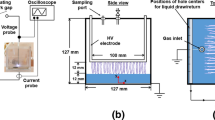Conclusion
This paper is, in a sense, a search for meaningful measurements of those internal and external forces or factors that shape the progress of water purification both in nature and in treatment works. Progress is related to time or distance.Internal factors are expressed in terms of (I) a fundamental reaction rate of a specific impurity exposed to a specific treatment process, (2) temperature itself or temperature-dependent properties of the water undergoing treatment, (3) longitudinal variation in treatment response, and (4) longitudinal change in the concentration of the impurity.External factors are measured in terms of (I) extent of contact surface relative to the volume of water treated or, for packed treatment columns or fixed contact media, relative to the volume of the contact media, and (2) contact opportunity in terms of the induced mobility of the contact surfaces or their sweep through the treatment unit as a product of time and velocity gradient. Structural longitudinal changes in relative contact surface and operational longitudinal changes in contact opportunity as well as relative contact surface require that these measurements be stated as functions to be evaluated specifically for each purification unit and its method of operation. Longitudinal change in interfacial activity itself is made part of the measurement of treatment response.
The mounting competition for water by municipalities, agriculture, and industry has placed water in short supply in many parts of the world and led to its increased pollution by ever more numerous and complex waste substances. Water purification, both for the prevention of the pollution of receiving bodies of water and for the production of safe and satisfactory water supplies for home, farm, and industry, thereby, has become ever more pressing and important. Needed progress in purification methods and economy can be insured, in the long run, only by a more fundamental understanding of the kinetics of water purification. For this understanding, we must look to the research and observational talents marshalled in institutions such as the ‘Eidgenössische Anstalt für Wasserversorgung, Abwasserreinigung und Gewässerschutz an der ETH Zürich’ and to the leadership given these institutions by scientists such as Professor Dr. O. JAAG. The present special issue of this Journal pays tribute to the past accomplishments of this institution and its director and thereby expresses to both of them also the good wishes of sister institutions and their staffs for ‘the years that are waiting before’.
Similar content being viewed by others
References
Gordon M. Fair,Modern Sewage Disposal (Federation of Sewage Works Associations 1938), p. 274.
H. W. Streeter andE. B. Phelps, Publ. Health Bull. 146 (US Public Health Service, Washington 1925).
E. B. Phelps, Water Supply Paper 229 (US Geol. Surv., Washington 1909).
Harriet Chick, J. Hygiene8, 92 (1908).
W. E. Adeney andH. G. Becker, Phil. Mag.38, 317 (1919).
W. K. Lewis andW. G. Whitman, Ind. Eng. Chem.16, 1215 (1924).
G. M. Fair andE. W. Moore, Sew. Works J.4, 433 (1932).
G. M. Fair, E. W. Moore andH. A. Thomas, Jr., Sew. Works J.,13, 1227 (1941).
G. M. Fair andJ. C. Geyer,Water Supply and Waste-Water Disposal (John Wiley & Sons, New York 1954), p. 727.
G. M. Fair andH. A. Thomas, Jr., J. and Proc., Inst. Sewage Purif.3, 235 (1950).
T. R. Camp, Trans. Amer. Soc. civil Engrs.120, 1 (1955).
W. N. Torpey, Sewage and Ind. Wastes26, 47 (1954);27, 121 (1955).
G. J. Schroepfer, W. J. Fullen, A. S. Johnson, N. R. Ziemke andJ. J. Anderson, Sewage and Ind. Wastes27, 460 (1955).
Allen Hazen, Trans. Amer. Soc. civil Engrs.53, 53 (1904).
National Research Council, Sew. Works. J.18, 787 (1946).
Author information
Authors and Affiliations
Rights and permissions
About this article
Cite this article
Fair, G.M., McKay, G., Abbott et al. A Unifying Concept of Water Purification Kinetics. Schweiz. Z. Hydrologie 22, 440–450 (1960). https://doi.org/10.1007/BF02503287
Issue Date:
DOI: https://doi.org/10.1007/BF02503287




